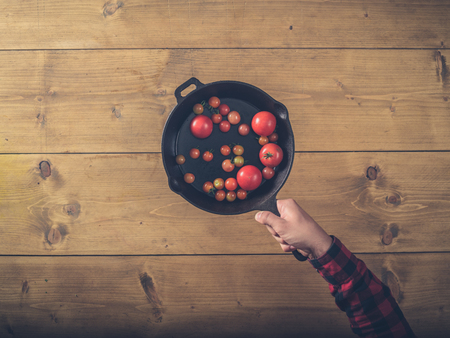Introduction to Autumn Comfort and the Hearth
As the days grow shorter and a crispness settles in the air, British homes instinctively turn towards the hearth, seeking both warmth and a sense of togetherness. The hearth, whether an open fire or a modern wood burner, has for centuries been the heart of the home in Britain—its glow inviting family and friends to gather, share stories, and enjoy moments of comfort against autumn’s chill. This age-old tradition finds new resonance when viewed through the lens of Feng Shui, an ancient Chinese philosophy that emphasises harmony between environment and wellbeing. By blending these cultural approaches, we can elevate our homes into sanctuaries that nurture both body and spirit throughout the autumn season.
2. Feng Shui Essentials for Seasonal Transition
As autumn settles over Britain, with its crisp air and the gentle shortening of daylight, our homes become sanctuaries against the encroaching chill. In the tradition of Feng Shui, this is a time to gently transition interiors, harmonising energy (Qi) to nurture warmth and comfort. The principles most pertinent to this season focus on achieving balance, ensuring smooth flow, and cultivating a feeling of cosiness as evenings grow longer and temperatures drop.
Embracing Balance: Yin and Yang in Autumn
Autumn marks the gradual shift from Yang (active, light) energy to Yin (passive, dark) energy. The aim is to balance these forces so that neither overwhelms the other. This can be achieved by:
- Layering textiles such as wool throws or tartan blankets for tactile warmth
- Introducing richer colours—think russet, ochre, and deep greens—to anchor spaces
- Softening lighting with table lamps or candles to counteract early nightfall
Optimising Qi Flow for Seasonal Comfort
Ensuring the free movement of Qi is crucial as we spend more time indoors. Blocked pathways can lead to stagnation, mirroring feelings of lethargy or gloom common in the darker months. Key steps include:
- Rearranging furniture to avoid cramped layouts, allowing easy circulation
- Clearing clutter from entryways and hearths—these areas symbolise the influx of fresh energy
Feng Shui Elements: A Guide for Autumn Warmth
| Element | How to Enhance | Cultural Touchpoint |
|---|---|---|
| Earth | Add pottery, terracotta pots, or earthenware mugs; display seasonal squashes or pumpkins | Evokes harvest festivals and home-grown abundance |
| Fire | Light fires (where possible), arrange candles in safe clusters; opt for warm red accents | The British hearth as a focal point for gathering and storytelling |
| Wood | Bring in dried branches, pinecones, or wooden decor; use oak or ash accessories | Nods to woodland walks and classic countryside aesthetics |
Sustaining Cosiness as Nights Draw In
Cultivating an atmosphere of cosiness—what Scandinavians might call ‘hygge’ but what we might describe as snugness—is central to British autumnal life. In Feng Shui, this means blending soft textures underfoot, creating nooks for reading by the fire, and keeping slippers or hot water bottles within reach. It’s about designing spaces that not only shield us from the cold but invite us to linger, reflect, and connect as nature quietens outside.

3. Arranging the Living Space for Warmth
As autumn’s chill settles in, arranging your living space with both Feng Shui principles and British sensibilities can greatly enhance warmth and comfort. Begin by focusing on the hearth, traditionally the heart of a British home, especially during the colder months. In Feng Shui, the hearth is considered a source of life energy (Qi), and its influence can be optimised by thoughtful placement of furniture and soft furnishings.
Furniture Placement: Embracing the Hearth
Position seating so it faces or encircles the hearth, creating an inviting focal point for gathering. Classic British elements such as deep Chesterfield sofas or high-backed armchairs upholstered in tweed or wool not only exude elegance but also retain heat effectively. Avoid placing furniture with its back to the hearth, as this can symbolically block positive energy flow and diminish the sense of welcome. Instead, allow for open sight lines and easy conversation, echoing both Feng Shui and traditional British hospitality.
Soft Furnishings: Layering Textures for Cosiness
To further amplify warmth, layer soft furnishings throughout the room. Add thick tartan throws, velvet cushions, or hand-knitted blankets to sofas and chairs. Place a plush rug—perhaps with a heritage pattern like herringbone or William Morris designs—in front of the fire to anchor the seating area and attract comforting Qi. These tactile additions not only provide physical warmth but also evoke a sense of autumnal abundance in line with both British tradition and Feng Shui beliefs.
Optimising Flow and Comfort
Ensure pathways remain clear to allow smooth movement around the hearth; this encourages good energy circulation according to Feng Shui. Side tables made from warm woods like oak or walnut offer practical surfaces for tea trays or books, while keeping clutter at bay—a nod to both tidy British interiors and harmonious energy flow. By combining these design approaches, you foster a living space that is as welcoming as it is energetically balanced throughout the autumn season.
4. Introducing Autumnal Colours and Textures
As autumn settles over the British Isles, homes naturally invite a transformation in both colour and texture to align with the seasons spirit and Feng Shui principles. The hearth, as the heart of the home, becomes the focal point for this seasonal shift, inviting warmth, comfort, and grounded energy. By thoughtfully introducing a palette inspired by autumn’s earth tones and rich textures—commonplace in UK interiors—you foster an environment that nurtures both body and spirit.
Earth Tones and Deep Hues: A British Palette
Feng Shui encourages the use of colours that evoke stability and connection to nature. In the UK, this can mean drawing inspiration from rolling moorlands, ancient woodlands, and misty heaths. Below is a suggested palette that harmonises with local scenery while enhancing the nurturing energy central to Feng Shui:
| Colour | Description | Feng Shui Benefit |
|---|---|---|
| Ochre & Mustard | Reminiscent of autumn leaves and Cotswold stone cottages | Promotes optimism and warmth |
| Deep Moss Green | The hue of British forests and garden moss | Encourages renewal and balance |
| Burgundy & Plum | The richness of ripe berries and harvest fruits | Adds depth and supports grounding energy |
| Burnt Sienna & Rust | The glow of embers and copper kettles by the fireside | Ignites vitality and resilience |
| Creamy Neutrals & Warm Greys | The soft fog over fields at dawn or weathered limestone walls | Nurtures calmness and stability |
Embracing Texture: Layering for Comfort
Beyond colour, texture plays a pivotal role in creating an inviting hearth area. Traditional British materials such as wool, tweed, velvet, and natural wood can be layered to provide tactile comfort. Think hand-knit throws draped over a Chesterfield sofa, thick woven rugs underfoot, or linen cushions on window seats. These textures not only offer visual warmth but also echo Feng Shui’s emphasis on tactile experiences that anchor us to our environment.
Textile Suggestions for an Autumnal Hearth
- Wool Blankets: Add softness and insulation; ideal for chilly evenings.
- Tweed Upholstery: Invokes rustic charm while being durable.
- Velvet Cushions: Infuse luxury and depth into seating areas.
- Linen Curtains: Allow gentle light diffusion while maintaining privacy.
- Kilims or Woven Rugs: Provide grounding energy beneath feet and furniture.
Cultural Context: The British Approach to Cosiness (Coziness)
The notion of cosy is deeply ingrained in British culture—a concept akin to the Scandinavian hygge. In Feng Shui terms, cultivating cosiness through rich colours and touchable fabrics ensures your home is not only visually appealing but also emotionally supportive during autumns darker days. By integrating these elements thoughtfully around your hearth, you create a sanctuary that honours both tradition and modern sensibilities.
5. Incorporating Traditional British Touches
As autumn’s chill settles in, blending Feng Shui principles with classic British elements can create a home that radiates warmth, comfort, and character. The magic lies in harmonising local traditions with Eastern philosophies to craft interiors that are both soothing and evocative of the season.
Using Local Materials for Authentic Warmth
Britain’s rich architectural heritage offers an abundance of natural materials ideal for seasonal transitions. Consider exposed brickwork, stone fireplaces, or timber beams—these not only provide excellent insulation but also imbue your space with a sense of authenticity. According to Feng Shui, natural materials ground energy and promote balance; therefore, opting for Cotswold limestone or reclaimed oak enhances both the aesthetic and energetic flow of your hearth.
Heritage Motifs: Weaving Stories Into Spaces
Quintessentially British motifs—think tartan throws, William Morris wallpaper, or classic herringbone patterns—add layers of history and narrative to your home. In Feng Shui terms, such motifs can be strategically placed to encourage positive chi; for instance, placing a floral-patterned cushion in the southwest corner of your living room can foster relationships and harmony during gatherings.
Synergy With Feng Shui Remedies
Pairing these traditional touches with time-honoured Feng Shui remedies amplifies their effect. Brass candlesticks on the mantelpiece not only speak to British tradition but also invite the Fire element, boosting warmth and conviviality. Meanwhile, woollen rugs in earthy tones support the Earth element, anchoring cosy seating areas and helping to circulate gentle energy throughout the room.
This interplay between British heritage décor and Feng Shui wisdom ensures your home is not just ready for autumn’s embrace but thoughtfully attuned to both local culture and universal harmony.
6. Sustaining Well-Being Through Seasonal Rituals
As autumn’s golden light filters through our windows, the mindful embrace of seasonal rituals becomes a gentle anchor for well-being. Marrying modern British living with age-old Feng Shui philosophy, these routines transform ordinary moments into harmonious experiences. A quintessential example is the cherished ritual of tea by the fireplace—a practice that resonates deeply within both British culture and the Feng Shui pursuit of balance.
Tea by the Hearth: A Fusion of Traditions
Savouring a cup of tea beside a crackling fire is more than comfort; it is an act steeped in mindfulness. In Feng Shui, fire embodies warmth, energy, and transformation. The hearth, long considered the heart of the home in Britain, naturally aligns with this principle, providing a focal point for gathering, reflection, and connection as the days grow shorter.
Creating Intentional Spaces
Arrange seating to encourage conversation and relaxation. Use soft throws and cushions in earth tones to ground the space, echoing autumn’s palette and enhancing feelings of stability. Positioning a small table for tea sets and perhaps a vase of seasonal foliage brings nature indoors—another fundamental aspect of Feng Shui harmony.
Mindful Routines for Everyday Harmony
Begin each evening by lighting candles or lanterns to soften the atmosphere. Engage in slow, deliberate movements as you prepare your tea—whether you favour classic Earl Grey or an herbal blend infused with local botanicals. Let each step become a meditative act, drawing you into the present moment.
Honouring Change and Connection
Autumn invites reflection on change and gratitude. Take time to share stories or quietly journal while nestled by the fire. Invite loved ones to join these simple rituals, fostering warmth not just physically but emotionally—a value central to both Feng Shui and British hospitality.
A Season of Lasting Well-Being
By weaving together mindful rituals rooted in both British tradition and Feng Shui wisdom, you sustain comfort and harmony throughout autumn. These practices nurture a sense of belonging and well-being that lingers long after the embers have faded, guiding your home gently toward winter’s embrace.


